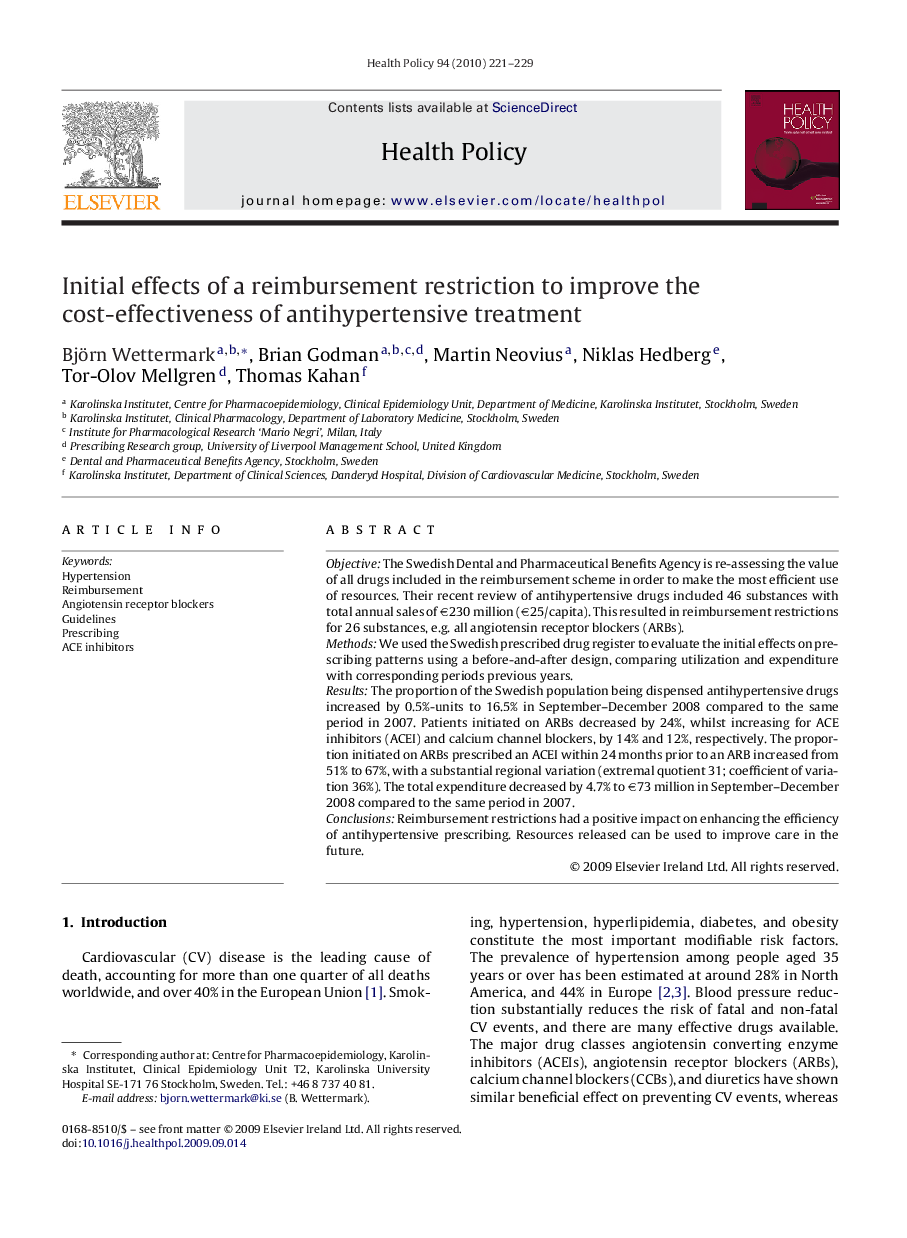| Article ID | Journal | Published Year | Pages | File Type |
|---|---|---|---|---|
| 4198373 | Health Policy | 2010 | 9 Pages |
ObjectiveThe Swedish Dental and Pharmaceutical Benefits Agency is re-assessing the value of all drugs included in the reimbursement scheme in order to make the most efficient use of resources. Their recent review of antihypertensive drugs included 46 substances with total annual sales of €230 million (€25/capita). This resulted in reimbursement restrictions for 26 substances, e.g. all angiotensin receptor blockers (ARBs).MethodsWe used the Swedish prescribed drug register to evaluate the initial effects on prescribing patterns using a before-and-after design, comparing utilization and expenditure with corresponding periods previous years.ResultsThe proportion of the Swedish population being dispensed antihypertensive drugs increased by 0.5%-units to 16.5% in September–December 2008 compared to the same period in 2007. Patients initiated on ARBs decreased by 24%, whilst increasing for ACE inhibitors (ACEI) and calcium channel blockers, by 14% and 12%, respectively. The proportion initiated on ARBs prescribed an ACEI within 24 months prior to an ARB increased from 51% to 67%, with a substantial regional variation (extremal quotient 31; coefficient of variation 36%). The total expenditure decreased by 4.7% to €73 million in September–December 2008 compared to the same period in 2007.ConclusionsReimbursement restrictions had a positive impact on enhancing the efficiency of antihypertensive prescribing. Resources released can be used to improve care in the future.
